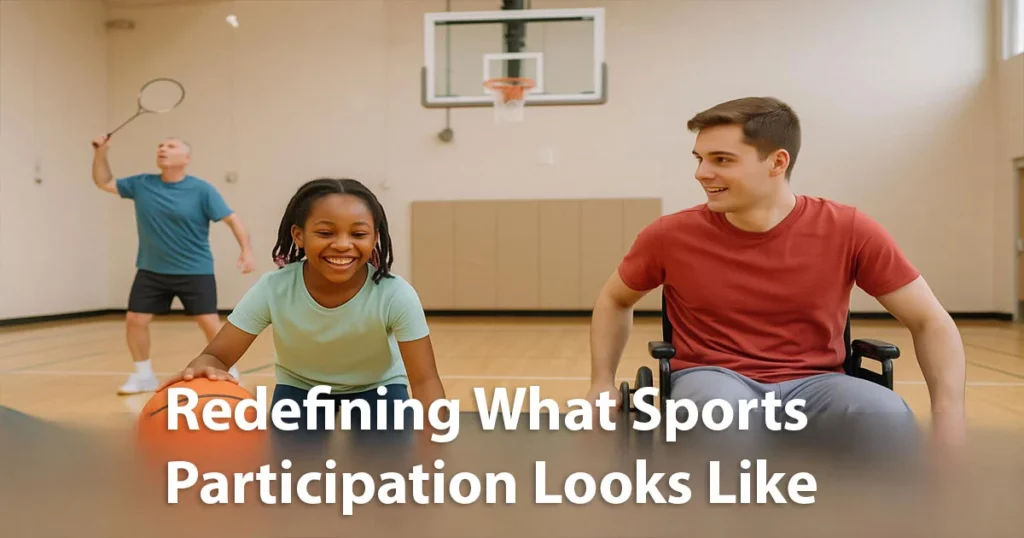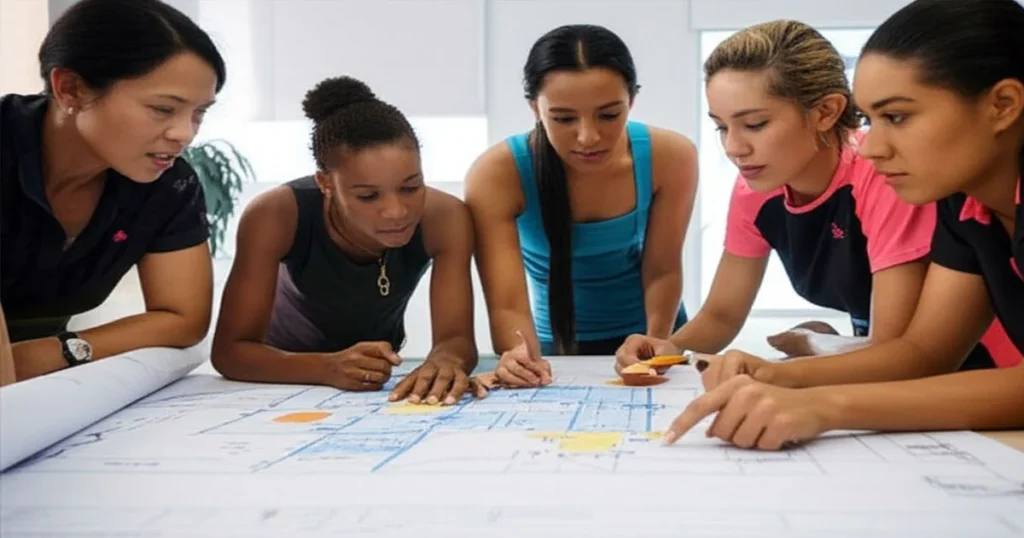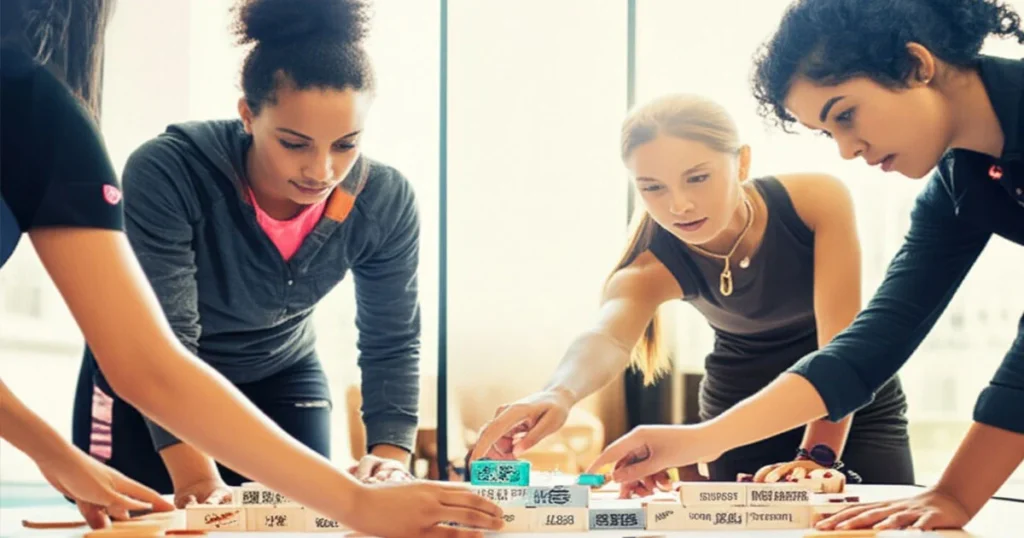The girls’ athletic event in New Jersey is changing the perceptions of young female players regarding their identity- by making the spaces as inclusive as possible, helping them to burst the stereotypical notions in their heads, and proving that a sport is not something only a confident and elite girl can do; every girl can. However, what is happening behind the curtains is probably the secret to transforming the involvement of girls in sports in the country.
Introduction: A Future You Didn’t See Coming
We can dream of a generation of girls who will never think about whether they should wear a sports jersey or not. Someday, perhaps sooner than we realize, that future may be with us, and the reason is that here exists a growing movement that is leading the change not by adults, but by 15-year-old girls like Kelli Brathwaite, whose event in New Jersey to be held in March is called, in honor of the event, Every Girl Moves. Although girls can easily be forgotten in the mainstream youth sports, which are usually accidentally left behind, this grassroots movement is changing this story.
What it means: Studies prove that girls are twice as likely to quit than boys do by the age of 14. However, efforts such as these are not only doing the reverse of this: they are not replicating the old structures, but creating something absolutely new.
This article explores the five powerful ways this Jersey-based event is inspiring girls in athletics and redefining the role of youth sports in female empowerment.
Redefining What Sports Participation Looks Like
The Hidden Reality
Conventional youth sports often assume confidence, prior skill, and competition-readiness. This Jersey event rewrites the playbook entirely. Unstructured, based on competition, but on exploring, they invite all nonprofessional girls to do, and to explore sports that many, many had never heard of, fencing, kickboxing, skateboarding, and so on.

Experiences such as the Every Girl Moves offer so-called low-stakes entry points, which are introduced by sociologists. These are necessary among girls who are threatened by the traditional sporting environment that is mainly dominated by competitive boys leagues and male coaches.
Why Conventional Wisdom Falls Short
Even most youth programs assume that all kids will have been supported fairly since early childhood. However, there are special obstacles impeding girls: fear of being judged, the image of their bodies, and stereotypes, which prevent sports from being considered an action linked to what is not feminine. This is an emotional ground that traditional programs do not take care of. The Jersey event instead puts inclusivity at the core—from the promotional messaging to the presence of diverse female role models.
That’s not about dumbing down standards; that’s about opening the gate.
Building Mental Strength, Not Just Physical Skills
What the Data Shows
Resource studies by the Women’s Sports Foundation depict the relationship between engagement in sporting activities and the psychological status of girls. Girls who participate in athletics have less anxiety, increased self-esteem, and good academic records.
However, the delivery channel of these benefits is imperative. Such events are all about encouragement, experimentation, and mentorship over medals. Girls are offered an opportunity to fail and laugh at mistakes, a condition that seals resilience.
Behind the Scenes Dynamics
This kind of culture doesn’t happen by accident. The event was born out of consultations led by teen organizers who listened to peers across Jersey youth clubs and schools. Girls said they wanted to feel safe, included, and unjudged.
Local community leaders, including youth workers and female coaches, took note. By removing “tryouts” and replacing them with “try-ons,” the event flipped the dynamic from performance to play. That subtle switch created space for girls to be vulnerable and brave at the same time.
Creating a Blueprint for Female Athletic Leadership
The Ripple Effects
When a 15-year-old girl organizes an island-wide athletic event, it shows that leadership is not age-based or position-based. It’s about vision. This model inspires more than participation—it fosters ownership.

Young girls seeing peers take charge is profoundly motivational. He undermines the notion that leadership in sports happens to be for boys and grown-ups.
What This Means for Local Communities
To the community groups, schools, and parents, the blueprint is simple: empower girls not only to be participants, but planners, promoters, and decision-makers. This can be spreading girls as the leaders of school sports councils, deploying girls in organizing events, and even acting as role models to youngsters in sports.
The long-term impact? A generation of women executives who feel powerful and beyond the discipline.
Challenging Stereotypes That Hold Girls Back
The Critics Have a Point
Some girls may simply not wish to participate in sport, say the critics, and they have the right. However, studies indicate that a good number of girls are willing; however, they simply do not want to be shamed, isolated, or questioned.
The Jersey event becomes an eye-opener over these obstacles. In co-ed flag football and exclusively female boxing clinics, the structure menaces the notion that there is a distinction betweboys’boys sports” girls’ sports.”
Unintended Consequences
Stereotypes petrify without interference. Girls can internalize the message that they are not athletic or even weak, that they do not need to be. Such events serve as a cultural counter-dose becatheyemakeakes girls realize that they are neither weaker nor less competitive nor less of a leader than men.
Challenging such stories at a young age, organizers are doing their part to stop the confidence crippling that starts during childhood and builds up throughout the rest of adulthood.
Building a Culture That Lasts Beyond the Event
The Ripple Effects
Most sports events last a day. But the ripple effects of this one are ongoing. The attendees come back to school more confident, with more info, and sometimes much inspired. Others continue developing new sports clubs or promoting more school facilities, or even initiate their sports activities.

What This Means for the Future of Girls’ Sports
This event is not an isolated effort—it’s a prototype. Replicable in other regions, it offers a model that others can follow:
- Center girls’ voices in design
- Eliminate performance pressure
- Prioritize exploration over perfection.
The whole culture changes when girls are called upon to influence the story.
Conclusion: A Spark With Global Potential
Although this Jersey event might have been initiated locally, its effects are global. It disrupts old standards, provides a cloning strategy, and demonstrates that empowering female athletes is no back story; it is the main focus of creating an equalized society.
Therefore, the next time you are asked whether sports are important to girls, ask yourself this: one island, one girl, one idea- transformed hundreds of lives.
What if your city did the same?
FAQs: Empowering Girls Through Sports
What is the merit of girls getting involved in athletics?
- Sports make girls mentally strong, boost self-esteem, achieve academic excellence, and develop lifetime abilities in leadership.
What are the differences between community-driven events and school athletics?
- They eliminate competitive structures, make the atmosphere less tense, and welcome more people to participate in the guardedly flexible format.
What do people stereotype girls in sports?
- The belief that girls are less athletic, not competitive, and uninterested. These false narratives often deter participation early.
What can parents do to help their girls with sports?
- Support experimentation, go to their matches, introduce them to female coaches, and show inclusive attitudes within the family.
Can this Jersey event model be used elsewhere?
- Absolutely. Encouraged through the community, teen leaders, and inviting planning, such events can be introduced in other cities all over the globe.

